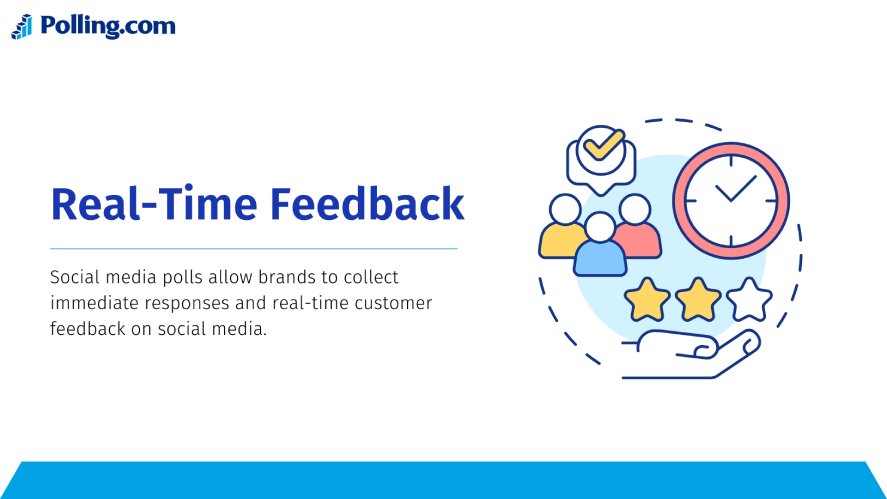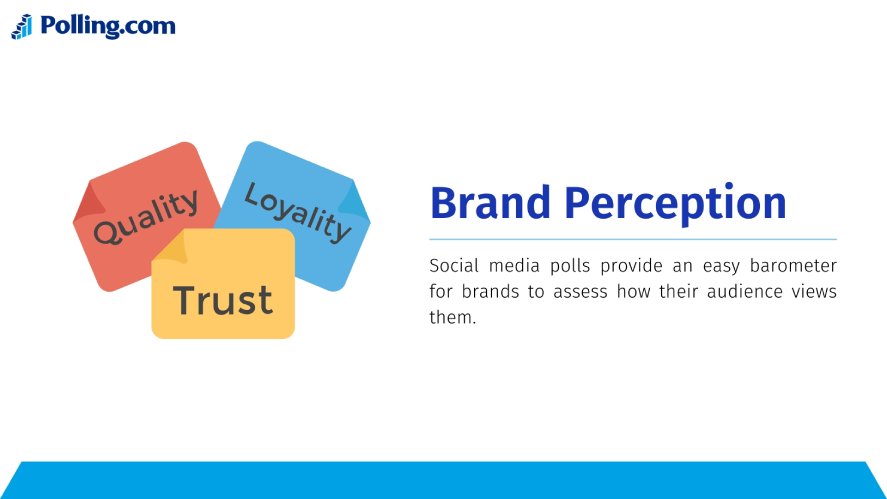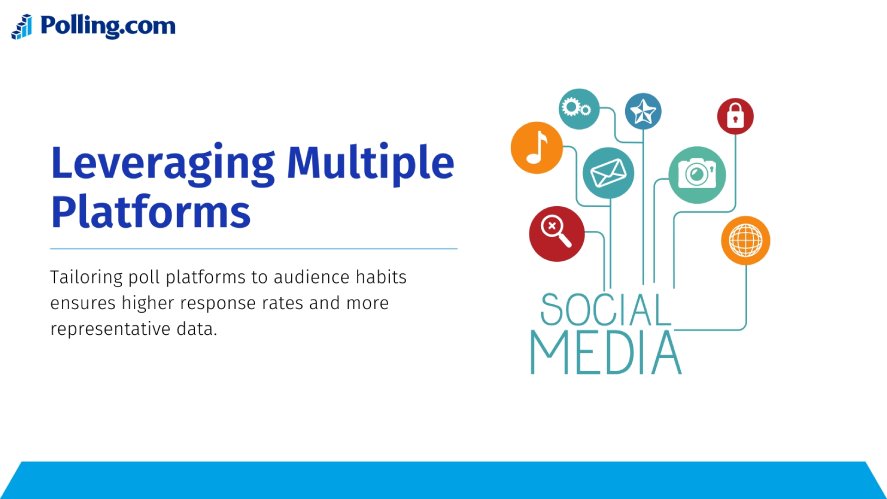
Social Media Polls: A Powerful Tool to Shape Your Business Strategy
Social media polls have become a valuable tool for businesses to engage with their customers.
Platforms like Facebook, Instagram, X, and LinkedIn provide opportunities for brands to interact and build relationships with their audience, and polls are an increasingly popular feature for sparking conversations and gathering insights.
Polls provide a simple, engaging way for brands to gather instant feedback from their followers.
Whether an X poll asking customers to vote on a new product feature or an Instagram story poll surveying brand perception, social media poll generate valuable data to inform business strategies.
Let’s explore the key benefits social media polls provide for businesses and how brands can use them effectively to shape data-driven strategies.
Social Media Polls And Its Benefits for Businesses
Social media polls are a simple, fun way for businesses to connect with people and gather insights. They offer a range of benefits that help companies to grow their reach and make smarter decisions.
Engagement and Reach
One of the most significant advantages of social media polls is that they encourage interaction and engagement from followers.
The simple act of voting in a poll generates more involvement than just passively viewing a post, which eventually boosts overall engagement metrics on social platforms.
Polls also have viral potential.
When users share a poll with their networks or leave comments discussing it, it reaches a much wider audience than the original followers who saw it. This expanded reach exposes the brand to new potential customers.
That said, compared to traditional surveys, social media polls spread quickly, save businesses time, and reach a wider audience.
Real-Time Feedback With Social Media Polls
Social media polls allow brands to collect immediate responses and real-time customer feedback on social media.
Within hours or even minutes, a poll generates actionable data that businesses can quickly use to adapt strategies based on shifting consumer preferences and opinions.

Rather than waiting days or weeks to collect survey responses, the real-time nature of social media poll means brands can identify changes in customer sentiment faster.
Based on the collected survey results, businesses can stay in sync with the audiences and adapt to all the changes accordingly in real-time, which helps them respond better to trends and keep customers pleased.
Cost-Effective Market Research
Polls provide businesses with valuable market research at a fraction of the cost of traditional surveys and focus groups.
They require minimal setup, just a simple poll post or story, making them highly affordable even for small businesses and startups without bottomless research budgets.
Social media poll lets brands gather consumer opinions, product feedback surveys, and insights into trends and demand quickly and easily.
For example, a new e-commerce company could poll its Instagram followers to gauge interest in potential new product categories before investing in extensive inventory.
This ability to do cost-effective market research helps smaller brands compete with larger ones.
Types of Valuable Data Social Media Poll Can Provide
Now that we’ve covered the key benefits of social media poll, let’s look at the types of valuable data they can generate to inform business strategies across several key areas.
Customer Preferences and Product Feedback
One of the most valuable uses of polls is gathering direct input into customers’ preferences and opinions on specific products, features, or services.
For example, a software company could poll users on which new features they find most useful to prioritize what to build next based on customer demand.
Similarly, polling customers on their preferred content formats, shopping experiences, or purchasing factors allows brands to tailor offerings to match consumer preferences.
Brand Perception
Understanding brand perception and satisfaction is critical for businesses to identify strengths, weaknesses, and opportunities in their customer reputation.
Social media poll provide an easy barometer for brands to assess how their audience views them.

A simple poll like “How would you rate our customer service?” generates perception metrics a company can track over time.
More specific polls probing impressions of qualities like trust, innovation, or value help brands audit their performance on crucial brand image dimensions.
Trend Analysis and Competitive Insights
Monitoring social conversations and polling audiences allows companies to keep a pulse on evolving consumer trends.
Asking followers directly what emerging products or features interest them most can uncover rising demand. This trend-spotting ensures brands align strategies to take advantage of where the market is headed.
Polls also enable competitive survey analysis method if structured appropriately.
Asking customers about their satisfaction level with your brand versus competitors provides perception benchmarks to evaluate where you stand in contrast.
Customer Sentiment and Pain Points
Finally, social media polling delivers immediate insight into customer satisfaction and pain points.
Brands can simply ask straightforward questions like:
- “How happy are you with the product/service?”
- “What could we do to improve the product/service?”
This identifies areas of frustration or dissatisfaction that businesses can act on.
Uncovering customer pain points through polls guides decisions on where brands should focus improvements or fixes to remove obstacles in the user experience.
Monitoring sentiment over time shows whether changes positively impact satisfaction.
Best Practices for Using Social Media Poll Effectively
Social media polls can provide valuable insights, but to get the most out of them, it’s essential to use them thoughtfully.
Let’s look at some best practice bands to get the most value from polls.
Crafting Clear, Focused Questions
To get meaningful responses, it’s essential to ask simple, focused questions that are easy for survey people to understand.
Avoid overly complex or vague questions; instead, make sure each question is specific and directly relevant to what you want to learn.
Precise wording is vital to getting helpful responses. Asking overly broad or confusing questions leads to vague data that offers little actionable insight.
For example, a question like “What do you think about our game development strategy?” is too broad.
A more specific question, like “Which platform should we prioritize for our next game release, PC or console?” will provide more precise guidance.
Leveraging Multiple Platforms
While polls can be incredibly effective on top social media platforms for polling, such as Facebook, Instagram, X, and Linkedin, brands should tailor platform choices based on the target demographic.
Facebook may deliver a broader range of age groups, while Instagram skews younger. X and LinkedIn polls resonate better for tech-savvy and business audiences.

Tailoring poll platforms to audience habits ensures higher response rates and more representative data.
It also allows for the gathering of customer feedback on social media on different types of questions depending on the platform’s strengths, such as Instagram for visuals and products, X for trends and opinions, etc.
Timing and Frequency
To maximize views and audience engagement through polls, it’s essential to time polls strategically around when target audiences are most active on social media.
Running a poll in the evening or on weekends elicits higher consumer response rates.
Spacing out polls over time and avoiding excessive social media polling prevents follower burnout.
While no definitive formula exists, somewhere between 1 to 3 polls per week per platform tends to strike the right balance for most brands.
Analyzing and Interpreting Results
The final step is mining the poll results for insights to inform business decisions.
Rather than taking poll outcomes at face value, brands should dig deeper into response patterns. Filter out biased or unrepresentative responses and identify any correlations or inconsistencies.
Analyzing poll data in the context of overall business objectives and metrics provides perspective.
The goal is to extract helpful consumer insights from polls that translate into impactful business strategies.
To do this, businesses can start by grouping similar answers to see common interests or preferences. Comparing these results with other customer data, like past purchases or website visits, can give a fuller picture.
Social Media Poll vs. Traditional Surveys
When gathering customer opinions, both social media poll and traditional surveys offer valuable insights.
Here, we’ll compare some strengths and limitations of each approach.
Speed and Simplicity vs. Depth of Data
The real-time simplicity of social polls generates faster feedback, while traditional surveys allow for the collection of more extensive data by asking many questions over a longer timeframe.
That said, social media polls are great for fast, easy feedback. They help businesses collect answers within minutes, and audiences can respond in just a few clicks.
While this saves a lot of time for businesses, the responses are often brief and may lack depth.
Traditional surveys, on the other hand, can take weeks to distribute and collect.
While this means a slower response time, traditional surveys tend to provide more prosperous, more comprehensive data. Hence, more comprehensive insights can be very useful for making informed decisions.
Demographic Reach
The social media poll can reach very broad audiences, but survey demographics can be more narrowly targeted based on attributes like location, age, or interests.
Social media polls can reach a broad audience quickly. This makes it perfect for capturing general opinions across many different survey people.

In contrast, surveys can be tailored so that only certain groups are sampled rather than being limited by the existing audience demographics of the social media platform.
This targeted approach makes traditional surveys better suited for developing an in-depth understanding of a particular segment’s needs and perspectives.
Data Validity and Bias
Social media polls can easily reach many people. However, they only reach existing platform users, who may not match all target customers. Results can also be biased by platform algorithms.
Traditional surveys allow careful targeting of specific demographics for a balanced mix of respondents. This helps ensure accurate survey results and reflective data across all customer groups. However, surveys take more effort to set up.
In short, fun polls for social media provide quick, broad feedback convenient for high-level listening. But for more profound insights from a representative sample, surveys work more to reduce sampling errors and capture all voices evenly.
Brands should weigh the pros and cons of both Polls vs. Surveys based on their research goals, available resources, and need for precise data.
Conclusion
In today’s digital landscape, social media platforms provide invaluable venues for brands to engage audiences in meaningful dialogue.
Polls represent extremely effective survey tools for businesses on these platforms to generate instantly actionable consumer insights.
While not a complete replacement for traditional research, the real-time feedback of social media enables businesses to take the pulse of consumers and rapidly adapt strategies to respond to market shifts and emerging trends.
So, it is ideal to leverage both social media polls and traditional surveys, each for their unique strengths, to truly understand target audiences and make informed, data-driven decisions.
